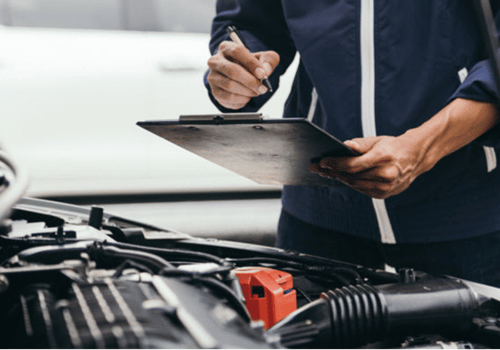Why Pre-Purchase Inspections Are Your Best Insurance Policy
Buying a home or vehicle is exciting—but also risky. One hidden issue can turn a dream purchase into a financial nightmare.
That’s where a pre-purchase inspection comes in. This essential step helps you uncover potential problems before money changes hands.
If you’re wondering, “What should I look for in a pre-purchase inspection?”—this post has your answers.
Whether you're buying property or a car, the right inspection checklist can save you from costly surprises. Let’s explore what needs to be checked before you commit.
Quick Overview: What’s Covered in a Pre-Purchase Inspection?
Here’s a brief breakdown of what a thorough pre-purchase inspection should assess:
-
For property: Structural integrity, water damage, plumbing, roofing, electrical, pest issues, insulation, and dampness.
-
For vehicles: Engine condition, transmission, brakes, suspension, tyres, accident history, and electronic systems.
The goal? To catch red flags before they become your responsibility.
Want to dive deeper? Keep reading—we’ll break it all down step by step.
What a Pre-Purchase Property Inspection Should Include
Structural Integrity
-
Inspect the foundation for cracks or movement.
-
Check for signs of sagging ceilings, uneven floors, or bowed walls.
-
Look at roof lines for any warping or dips.
Did You Know? Structural issues are among the most expensive problems to fix and are often not visible without an expert eye.
Moisture and Dampness
-
Use moisture meters to detect damp areas inside walls.
-
Inspect ceilings, walls, and under flooring for stains or bubbling paint.
-
Check external drainage and roof runoff points.
Electrical Systems
-
Confirm safety switch and circuit breaker operation.
-
Look for exposed wiring or outdated fuse boxes.
-
Ensure compliance with Australian standards.
Pro Tip: Older homes may need a full electrical upgrade—don’t overlook this!
Plumbing
-
Test water pressure from all taps and showers.
-
Inspect under sinks and around toilets for leaks.
-
Check hot water system age and condition.
Pest and Termite Inspection
-
Look for soft or hollow timber—especially near ground level.
-
Check roof voids and crawlspaces for signs of activity.
-
Request a separate pest report if not included.
What to Look For in a Pre-Purchase Car Inspection
Under the Hood
-
Engine noise, oil leaks, and coolant levels.
-
Battery health and alternator condition.
-
Fluid condition (clean or contaminated).
Pro Tip: Dirty oil can indicate poor maintenance, while milky oil might point to a blown head gasket.
Brakes and Suspension
-
Test brake response during a short drive.
-
Listen for squeaking, grinding, or pulling.
-
Push down on each corner of the car to test shock absorption.
Vehicle History and Odometer Check
-
Confirm logbook service history.
-
Use VIN to check for previous accidents or write-offs.
-
Ensure odometer reading is consistent with wear and history.
Interior & Electronics
-
Test windows, AC, radio, central locking, and dashboard lights.
-
Look for water damage signs (musty smell, damp carpet).
-
Confirm airbag light functions correctly.
Quick Guide: How This Checklist Helps You Buy Smarter
A Real-World Scenario
You’ve found a property that seems perfect—or a car that looks spotless. It’s tempting to skip the inspection to save time or money. But skipping it is the fastest way to inherit someone else’s problem.
Common Challenges
-
Is this property hiding water damage or termites?
-
Is the car’s engine sound or just cleaned up to sell?
-
What if I miss a deal while waiting for the report?
How to Solve It
1. Book a qualified inspector early: This saves time and gives you leverage to negotiate or walk away.
2. Ask for photos and clear summaries: A quality report should show not just what's wrong, but why it matters.
3. Set a cooling-off clause: Include conditions in your offer that let you withdraw based on inspection results.
4. Compare findings to the asking price: If issues are minor, you can negotiate a discount. If major, you’ll be glad you checked.
Why It Works
A detailed pre-purchase inspection removes emotion from the decision and helps you buy with confidence, not regret.
Need help arranging an inspection? Speak with a local expert before you commit.
FAQs About Pre-Purchase Inspections
Is a pre-purchase inspection mandatory?
No, but it’s highly recommended. While not required by law, skipping this step can lead to buying something unfit, unsafe, or overpriced.
How long does a property inspection take?
Usually 1–2 hours. Reports are often delivered within 24–48 hours. Urgent bookings may be available for a fee.
What happens if issues are found?
You can:
-
Renegotiate the price.
-
Request repairs before settlement.
-
Withdraw your offer (if under cooling-off period).
How much does a pre-purchase inspection cost?
-
Property inspections: $300–$800 depending on size and type.
-
Vehicle inspections: $150–$350 depending on location and level of detail.
Should I still get an inspection for a new build or dealership car?
Yes! Even new homes and cars can have faults. Factory defects, poor workmanship, or transport damage may not be visible without a thorough inspection.
Conclusion: Don’t Buy Blind—Inspect Before You Invest
A pre-purchase inspection gives you the clarity and control you need to make a smart buying decision.
Whether it’s a property or a car, this step helps you uncover hidden issues, avoid nasty surprises, and even negotiate a better deal.
The checklist above is your starting point. And if anything feels off—trust your gut and let the inspection do the talking. After all, peace of mind is worth far more than the cost of a report.




